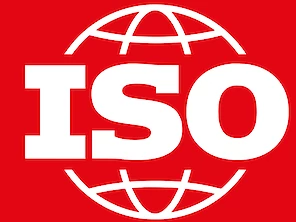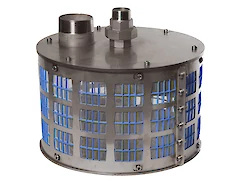Ozon
Umrechnungstabelle für die Ozongaskonzentration erklärt

Entdecken Sie alles über die Ozontechnologie: Einheitenumrechnungen, Generatoren, Nanoblasenmischer und Sensoren für die Wasseraufbereitung und -desinfektion. Auf der Ozon-Seite von Acniti werden praktische Anwendungen für die Aquakultur, die Lebensmittelindustrie, die Pharmaindustrie und die Umweltsicherheit erläutert. Entdecken Sie innovative Lösungen für die genaue Ozonmessung und umweltfreundliche Reinigung, um Ihre Prozesse zu optimieren und die Wasserqualität zu verbessern. Lesen Sie weiter, um detaillierte Einblicke in die Branche und Produktdetails zu erhalten.
Die Ozonkonzentration kann in verschiedenen Einheiten gemessen werden, je nach Anwendung, Branche oder Messumgebung. Im Folgenden findest du eine Erläuterung der Umrechnungstabelle auf der Acniti-Website, die die Umrechnung zwischen den gebräuchlichen Ozonkonzentrationseinheiten zeigt:
| G/nM3 | PPM | VOL% | WT% |
| 1 | 466.666667 | 0.04666667 | 0.06998367 |
| 10 | 4,666.66667 | 0.46666667 | 0.69837047 |
| 100 | 46,666.6667 | 4.6666667 | 6.84039088 |
| 0.00214286 | 1 | 0.0001 | 0.00015 |
| 0.02142857 | 10 | 0.001 | 0.00149999 |
| 0.21428571 | 100 | 0.01 | 0.01499925 |
| 21.4285714 | 10,000 | 1 | 1.49253731 |
| 214.285714 | 100,000 | 10 | 14.2857143 |
| 428.571429 | 200,000 | 20 | 27.2727273 |
| 14.3334926 | 6,688.96321 | 0.66889632 | 1 |
| 147.783251 | 68,965.5172 | 6.89655172 | 10 |
| 306.122449 | 142,857.143 | 14.2857143 | 20 |
| 2142.85714 | 1,000,000 | 100 | 100 |
Erklärte Einheiten
G/nm³ (Gramm pro Normkubikmeter):
- Ein Maß dafür, wie viele Gramm Ozon in einem Kubikmeter Luft bei Standardtemperatur und -druck vorhanden sind.
- Wird häufig in der Industrie und von Ingenieuren bei der Planung von Ozonanlagen verwendet.
PPM (parts per million):
- Drückt die Anzahl der Ozonmoleküle pro eine Million Luftmoleküle aus.
- Wird häufig für die Messung von Ozon in der Luft verwendet, insbesondere für die Überwachung von Umwelt-, Sicherheits- und gesetzlichen Vorschriften.
VOL% (Volumenprozent):
- Gibt an, welcher Anteil des gesamten Luftvolumens aus Ozon besteht.
- Nützlich bei der Produktion von hochkonzentriertem Ozongas und in Labors.
WT% (Gewichtsprozent):
- Der Gewichtsanteil von Ozon im Gasgemisch, ausgedrückt in Prozent.
- Wichtig in Situationen, in denen die Masse wichtiger ist als das Volumen, z. B. bei der chemischen Verarbeitung oder Dosierung.
So verwendest du die Tabelle
- Finde deine Ausgangseinheit in der Spalte ganz links (z. B. G/nm³).
- Gehe über die Zeile, um den entsprechenden Wert in den anderen Einheiten (PPM, VOL%, WT%) zu finden.
- Beispiel: 1 G/nm³ Ozon ist gleichzusetzen mit:
- 466,67 PPM
- 0,0467 VOL%
- 0,06998 WT%
Praktisches Beispiel
Wenn ein Ozongenerator 10 G/nm³ erzeugt, entspricht dies laut Tabelle:
- 4.666,67 PPM
- 0,4667% nach Volumen
- 0,6984% nach Gewicht
Anmerkungen
- Diese Umrechnungen sind entscheidend für die Planung, Kalibrierung und den Betrieb von Ozonanlagen, insbesondere wenn du Spezifikationen vergleichst oder Umweltgrenzwerte und Dosierungsanforderungen in verschiedenen Ländern oder Branchen umrechnest.
- Die Genauigkeit der Umrechnung hängt von der Temperatur, dem Druck und den Messstandards ab - diese Werte basieren auf Standardbedingungen.
- Diese Tabelle dient Ingenieuren, Forschern und Praktikern, die mit Ozon in verschiedenen Anwendungen arbeiten, als Schnellreferenz, um Präzision und Konsistenz bei Messungen und Berichten zu gewährleisten.
Links
14 Links zu anderen Seiten: Ozon
Erlebe kristallklares, gesünderes Wasser mit Swim Puriti - der bewährten ultrafeinen Ozonblasen- und Nanoblasen-Technologie für Pools, Spas und Wasserspiele. Dieses fortschrittliche System nutzt die Kraft der Ozon-Nanoblasen, um das Wasser zu reinigen, zu erfrischen und zu schützen, und ist damit ideal für alle Pools von Luxushotels bis hin zu großen privaten Rückzugsorten.
In Kombination mit den Vorteilen eines statischen Mischers hat Acniti die firmeneigene Drallströmungstechnologie eingeführt, um effizient und effektiv Ozon-Nanoblasen zu erzeugen. Die turbiti OEM-Serie gibt Händlern und Partnern die Möglichkeit, die turbiti Ozontechnologie in ihre eigenen Geräte zu implementieren und Nanobubbles-Generatoren unter ihrem eigenen Markennamen zu verkaufen. Dieses Produkt ist nur für Händler und Partner von acniti, die einen Lizenzvertrag haben und sich verpflichten, bestimmte Mengen abzunehmen.
Der Ozon-Nanoblasenmischer ist ein Nanoblasengenerator, der speziell für die Verwendung mit Ozon entwickelt wurde. Forschungen an Universitäten haben gezeigt, dass ozonisiertes Nanoblasenwasser seine Ozonrückstände länger im Wasser hält als bei der Verwendung eines Venturis und auch die Ozonausgasung reduziert wird.
Entdecke den revolutionären Acniti Oxiti Ozongenerator, der O3- und O2-Produktion in einem kompakten Gerät vereint. Dieses luftgekühlte System erzeugt 12 Gramm Ozon pro Stunde und nutzt einen eingebauten Sauerstoffkonzentrator für eine optimale Leistung. Er besteht aus hochwertigen Materialien wie Quarzglas und Titan und bietet eine Lebensdauer von 16.000 Stunden - weit mehr als keramische Alternativen. Perfekt für Forschungsanwendungen, die kontaminationsfreie Ozon- und Wasseraufbereitungssysteme benötigen. Erfahre, wie diese innovative Technologie deinen Bedarf an Ozonerzeugung verändern kann.
Das Hammermühlen-Rotationskonzept des microStar verwendet die branchenweit geringste Energiemenge zur Erzeugung von Nanoblasen.
Entdecke einen kompakten, luftgekühlten Ozongenerator mit einer stabilen Leistung von 1, 12 oder 21 g/h und einem metallfreien Gasweg für reines Ozon, der für die Wasseraufbereitung und den Laborbedarf geeignet ist. Lies weiter, um mehr über die Merkmale, Spezifikationen und idealen Anwendungen zu erfahren.
microStar Ozon-Nanoblasengenerator
Pumpen Libelle FL5035 24VDC selbstansaugende Membranpumpe
Ozon-Nanoblasen
Ebara Pumpenoption für den turbiti nanobubble ozone mixer 3LM4 40-160/0.55
Der modulare Ozonevernichter von Acniti nutzt Katalysetechnologie, um überschüssiges Ozon sicher in reinen Sauerstoff für Luft- und Wasserbehindlungsanwendungen umzuwandeln.
Ozon-Nanoblasen sind attraktiv für die Wasserreinigung, -aufbereitung und -desinfektion. Ozon-Nanoblasen haben eine höhere Stoffübertragungsrate als gewöhnliche Blasen und daher nutzen Nanoblasen Ozon effizienter als starkes Oxidationsmittel und Sterilisator, um Bakterien und Viren abzutöten oder zu inaktivieren.
Fortschrittlicher Ozon-Wassersensor der Serie EL-610 basierend auf UV-Absorptionstechnologie
Zuverlässige Ozonmessung, einfach zu bedienen! Der Ozon-Leckdetektor PHNX-100 ist ein hochwertiger Ozon-Gasdetektor, der speziell für die Echtzeitmessung von Ozonkonzentrationen in der Luft entwickelt wurde. Egal, ob du mit Ozongeneratoren zur Desinfektion arbeitest, in einer Laborumgebung oder für die Luftqualität in technischen Anlagen verantwortlich bist, dieser Detektor bietet dir die Sicherheit, die du brauchst. Ozon ist stark, aber potenziell schädlich, wenn man ihm zu viel ausgesetzt ist. Der PHNX-100 sorgt dafür, dass du immer einen Überblick über die aktuelle Situation hast. Der Detektor ist mit einem genauen elektrochemischen Sensor ausgestattet. Wenn die eingestellten Werte überschritten werden, wird automatisch ein Alarm ausgelöst, der über einen Relaisausgang mit externen Systemen verbunden werden kann. Die Installation ist einfach und die Bedienung ist intuitiv. Der Sensor ist ohne Neukalibrierung austauschbar, was Zeit und Kosten bei der Wartung spart. Dank des kompakten Gehäuses eignet sich der Melder für eine Vielzahl von Räumen, von technischen Anlagen bis hin zu Industriearbeitsplätzen. Kurz gesagt: Der Ozon-Leckage-Detektor PHNX-100 vereint Zuverlässigkeit, Sicherheit und Benutzerfreundlichkeit in einer intelligenten Lösung. Ideal für alle, die mit Ozon arbeiten und nichts dem Zufall überlassen wollen.







